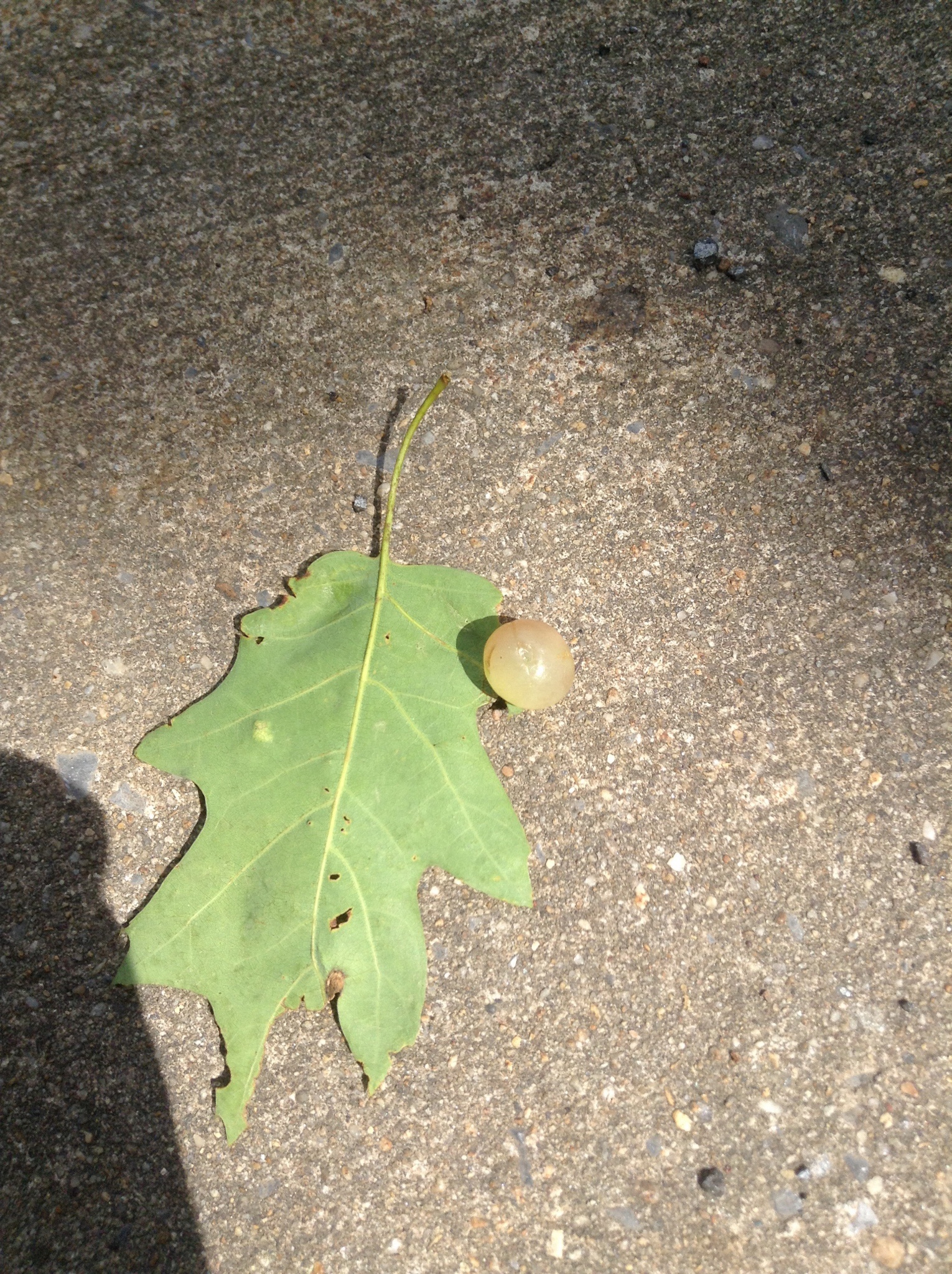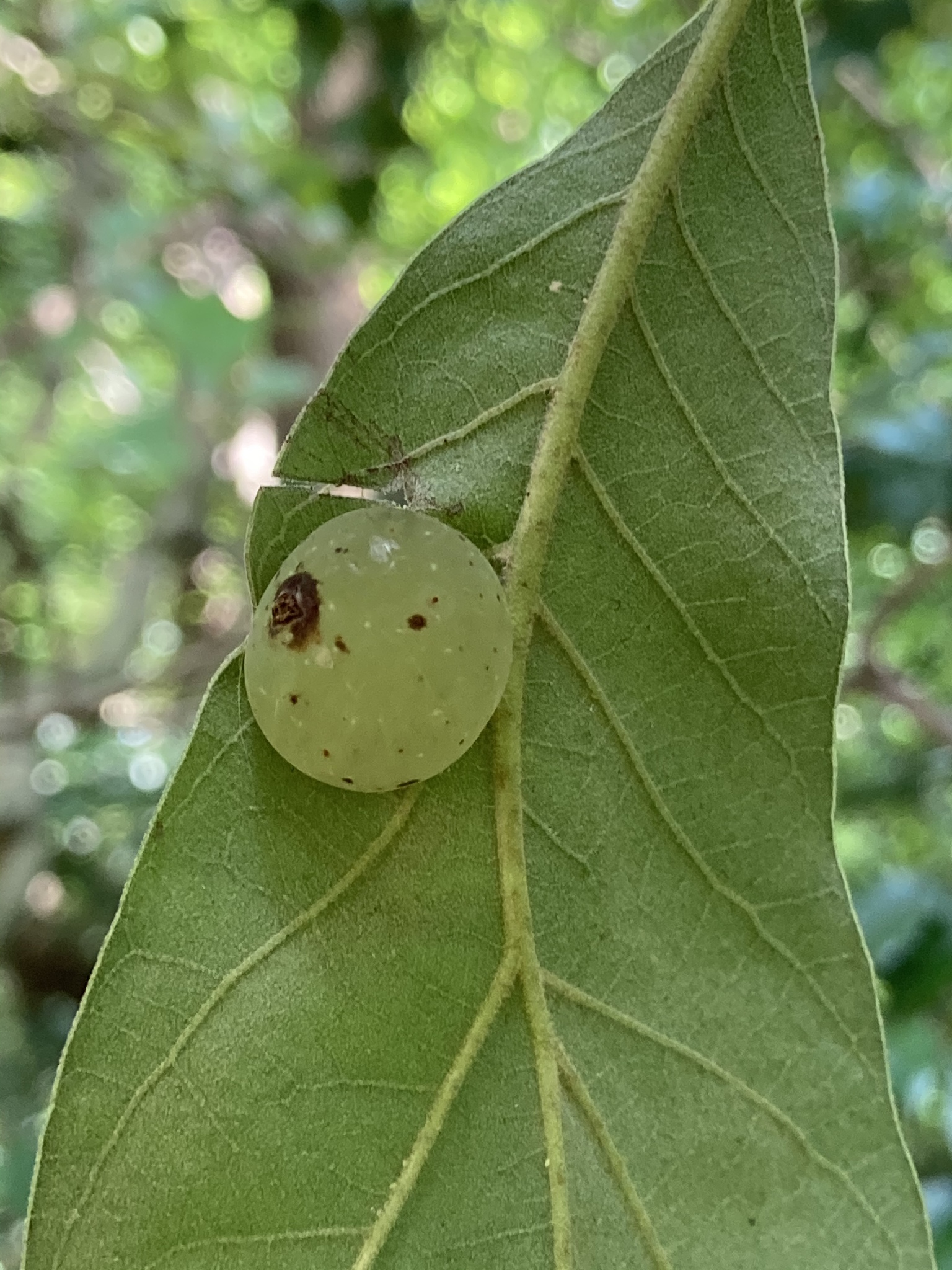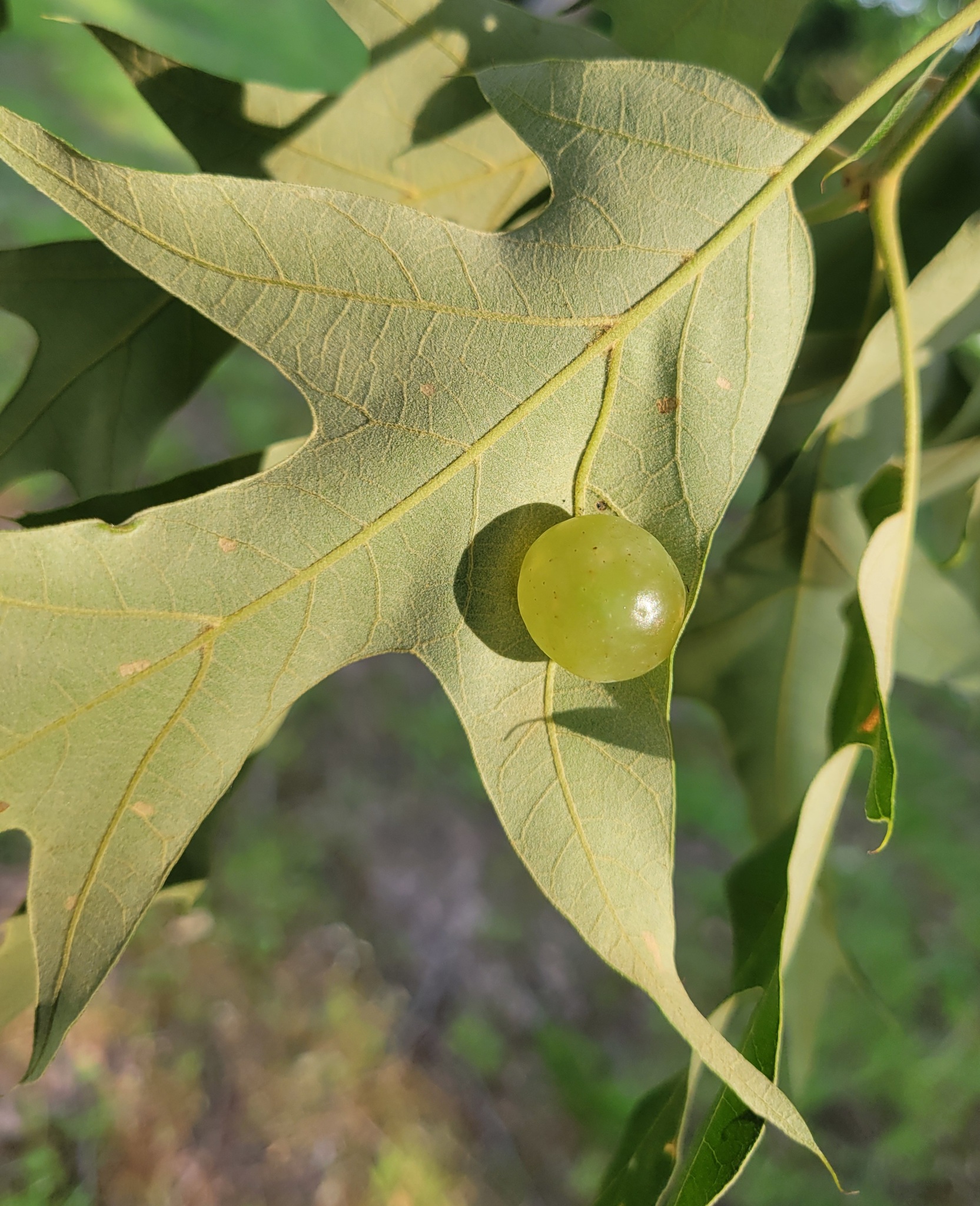Map Snapshot




4 Records
Where To Find
Forms succulent galls on leaves in the red oak group.
Seasonality Snapshot
Source: Wikipedia
| Amphibolips nubilipennis | |
|---|---|

| |
| The translucent oak gall, induced by the sexual generation of Amphibolips nubilipennis. | |
| Scientific classification | |
| Domain: | Eukaryota |
| Kingdom: | Animalia |
| Phylum: | Arthropoda |
| Class: | Insecta |
| Order: | Hymenoptera |
| Family: | Cynipidae |
| Genus: | Amphibolips |
| Species: | A. nubilipennis
|
| Binomial name | |
| Amphibolips nubilipennis Harris, 1841
| |
Amphibolips nubilipennis, known generally as the translucent oak gall wasp, is a species of gall wasp in the family Cynipidae. Its range includes Ontario, Quebec, and much of the eastern United States.[1][2] Hosts include Quercus buckleyi, Quercus coccinea, Quercus falcata, Quercus ilicifolia, Quercus imbricaria, Quercus marilandica, Quercus rubra, and Quercus velutina.[3]
The translucent oak gall is induced by the sexual generation of Amphibolips nubilipennis.[3] This gall is succulent and accumulates high concentration of malic acid causing a low pH of gall tissues. The extreme acidity of the translucent oak gall tissues has been proposed to represent a defensive strategy against parasitoid wasps.[4]
References
[edit]- ^ "Species Amphibolips nubilipennis – Translucent Oak Gall Wasp". bugguide.net. Retrieved 1 March 2023.
- ^ "translucent oak gall wasp Amphibolips nubilipennis Harris, 1841". www.invasive.org. Retrieved 1 March 2023.
- ^ a b "Amphibolips nubilipennis (sexgen)". www.gallformers.org. Retrieved 1 March 2023.
- ^ Guiguet, Antoine; McCartney, Nathaniel B.; Gilbert, Kadeem J.; Tooker, John F.; Deans, Andrew R.; Ali, Jared G.; Hines, Heather M. (1 March 2023). "Extreme acidity in a cynipid gall: a potential new defensive strategy against natural enemies". Biology Letters. 19 (3): 20220513. doi:10.1098/rsbl.2022.0513. ISSN 1744-957X. PMC 9975648. PMID 36855854. S2CID 257233541.




